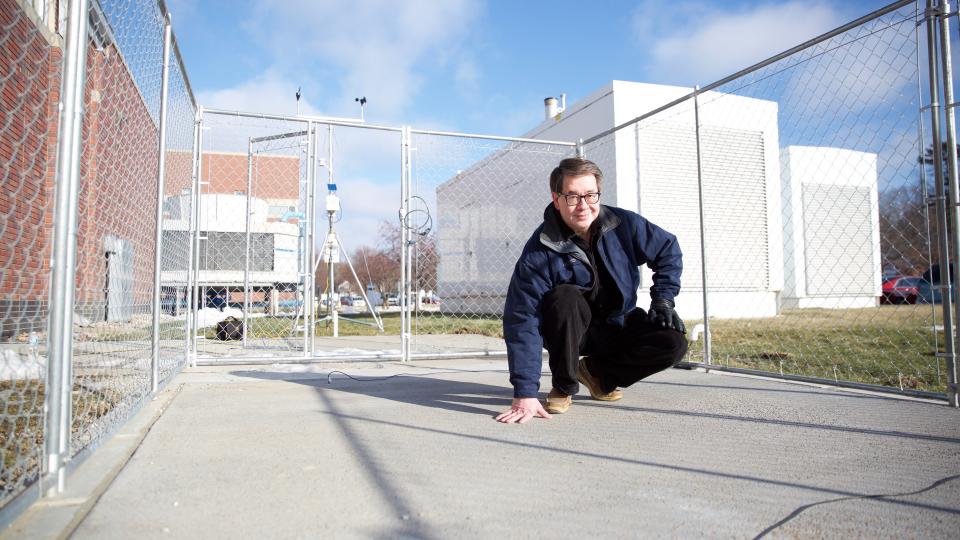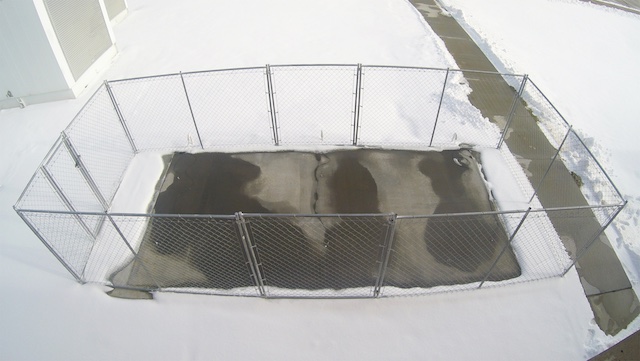Like an electric blanket, this slab of concrete promises to keep airport runways warmer and bridges free from ice whenever winter storms strike.
Researchers have altered the basic foundation of roadbuilding material so it can electrically melt ice and snow.
At the University of Nebraska-Lincoln they mixed in steel shavings and carbon which allow the material to conduct an electric current. Turning up the power heats the concrete slabs and melts ice and snow.
FIND GOOD NEWS THAT’LL MELT YOUR HEART WITH OUR APP—> Download FREE for Android and iOS
In the past, road builders have installed cables and pipes in bridges and highways to melt ice and snow, but so far the systems have been expensive and unreliable. Some are eventually ripped out by heavy traffic.
This is the first material to be used within a bridge that conducts electricity directly throughout all the concrete. Even if traffic wears away part of the roadway, the electricity continues to flow and the concrete continues to melt ice and snow.
The university researchers have been testing the material for more than 13 years on a busy 150-foot bridge. The concrete has been melting snow and ice on its own and without a problem since 2002.
In the picture above, snow blankets the ground outside a UNL classroom except for a 200-square-foot slab of the electrified concrete. Cranking up the power after a winter storm hit in December, melted the precipitation that fell on it (see the video below).
The snow-melting road material isn’t cheap, at $300 per cubic yard, it’s more than twice the price of regular concrete.
The bridge uses about $250 in electricity over a typical three-day storm, but the researchers say that’s a small fraction of the cost of deicing chemicals used to do the same job.
CHECK OUT: Turning Litter Into Paved Roads: Meet India’s ‘Plastic Man’
They admit it’s not economical to electrify an entire highway, but since bridges and highway ramps freeze more quickly than roads, the electric-concrete mixture is a bargain to make them safer in freezing weather.
The UNL team is now demonstrating their technology to the Federal Aviation Administration with a goal of using their invention for the tarmac at a major airport.
The FAA isn’t interested in heating runways, but believes the concrete could be helpful around the gates where planes, baggage carts, and food trucks can slide on slick pavement.
CHECK OUT: This Bike Path Paved With Solar Panels Can Power One Home For a Year
“They said that if we can heat that kind of tarmac, then there would be (far fewer) weather-related delays,” civil engineering professor Chris Tuan said. “We’re very optimistic.”
Nebraska’s Department of Roads gave the material a positive review after five years of use on the Roca Spur Bridge in Lincoln and the FAA appears impressed with the material so far.
To show how much he believes in the material, Tuan even built his home’s patio out of the material – and hasn’t ever had to shovel snow off of it.
(WATCH the time lapse video of the concrete in action below) – Photos: University of Nebraska-Lincoln





















